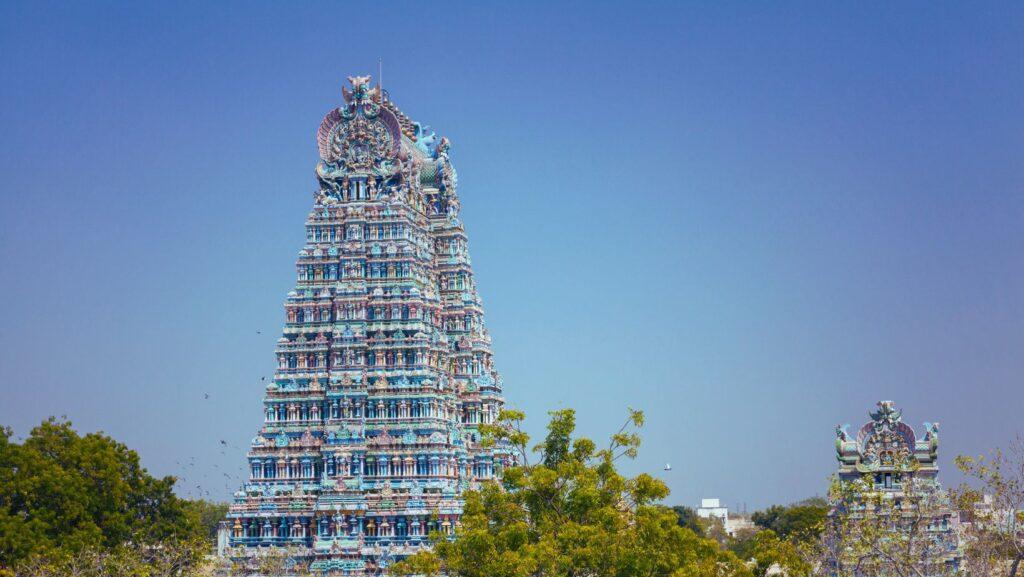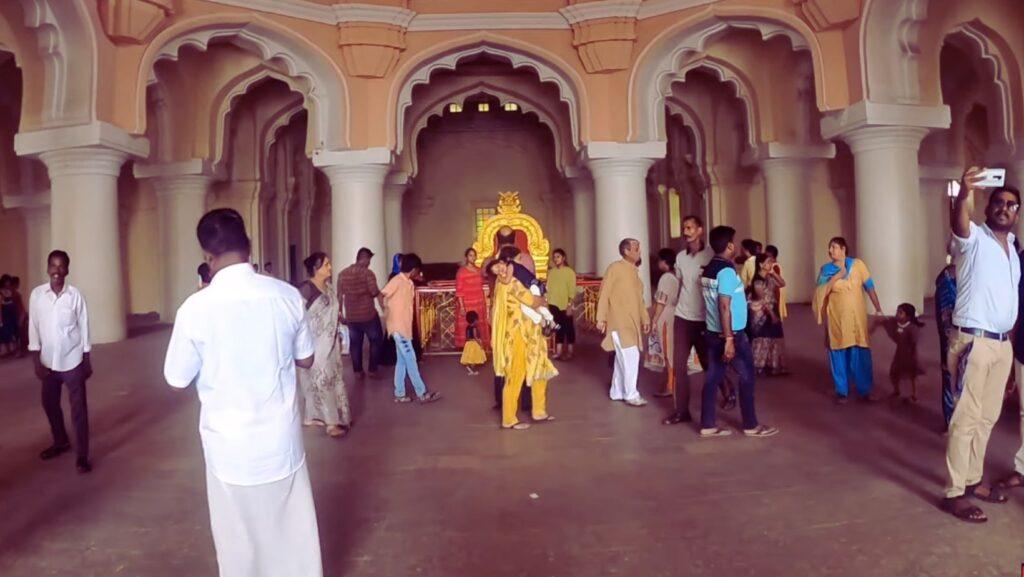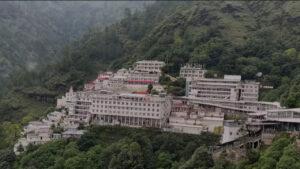Meenakshi Amman Temple
The Meenakshi Amman Temple is a magnificent Hindu temple complex in Madurai, Tamil Nadu, India. It is dedicated to the goddess Meenakshi, a form of Shakti, and her consort, Sundareshwarar, a form of Shiva.

The temple is a symbol of the divine union between the two deities, who are worshipped in separate shrines within the complex. The temple is also a masterpiece of Dravidian architecture, with 14 towering gopuras (gateway towers) covered with thousands of colorful stone statues depicting animals, gods, and demons.
Meenakshi Amman Temple History
The history of the Meenakshi Amman Temple is interwoven with the legends and myths of Hinduism. According to ancient Tamil literature, the Meenakshi Amman Temple was originally built 2,500 years ago by survivors of the lost continent Kumari Kandam, a mythical triangle-shaped continent that was said to span the Indian Ocean, touching Australia, Madagascar, and India.
According to Hindu legend, the god Shiva came to Madurai in the form of Sundareswarar to marry Meenakshi, the daughter of the Pandya ruler; Meenakshi was a manifestation of the goddess Parvati. The Meenakshi Amman Temple is dedicated to their union.
Meenakshi Amman Temple Architecture
The temple is also a splendid example of Dravidian architecture, with 14 majestic gopuras (gateway towers) adorned with thousands of colorful stone statues depicting animals, gods, and demons.
The temple has four main entrances, each facing one of the cardinal directions. Inside the complex, there are many other attractions, such as the Hall of a Thousand Pillars, which has 985 exquisitely carved columns; the Pottamarai Kulam (Golden Lotus Pond), where devotees can bathe in holy water; and the Aiyaram Kal Mandapa (Thousand-Pillar Hall), which doubles as the temple’s museum.
The temple is one of the oldest and largest sacred sites for Hindus, dating back to the 4th century CE. It is also one of the few religious monuments in India devoted to a female deity. The temple attracts thousands of pilgrims every day, who come to join prayers, witness ceremonies, and celebrate festivals. The Meenakshi Amman Temple is a living temple that showcases the rich culture and heritage of Tamil Nadu.
Major Festivals Celebrated at the Meenakshi Temple
The major festivals celebrated at the temple are Chithirai Thiruvizha (April-May), which commemorates the wedding of Meenakshi and Sundareswarar; Navaratri (September-October), which honors the nine forms of Shakti; Cradle festival (November-December), which depicts the childhood play of Meenakshi and Sundareswarar; Aavanimoolam (August-September), which marks the coronation of Meenakshi as queen; Meenakshi Tirukkalyaanam (January-February), which re-enacts the marriage ceremony of Meenakshi and Sundareswarar; and Alagar’s river plunge (May-June), which celebrates the arrival of Vishnu as Alagar to bless his sister Meenakshi’s wedding.
Best Time to Visit Meenakshi Amman Temple
- Meenakshi Amman Temple is open throughout the year, but the best time to visit it is during the winter season from October to March. During this time, the weather is pleasant and comfortable for sightseeing and exploring the temple.
- You can also witness some of the major festivals celebrated at the temple, such as Navaratri, Cradle festival, Aavanimoolam, and Meenakshi Tirukkalyaanam. These festivals showcase the rich culture and heritage of Tamil Nadu and attract thousands of pilgrims and tourists.
- The best time to visit the temple during the day is early in the morning or in the evening for the night ceremony. The temple opens at 4:30 am and closes at 10 pm. The morning hours are less crowded and offer a peaceful and serene atmosphere for worship and meditation.
- The evening hours are more lively and festive, as you can see the beautiful illumination of the temple and witness the rituals and ceremonies performed by the priests.
Meenakshi Amman Temple is a must-visit destination for anyone who wants to experience the spiritual and artistic beauty of Tamil Nadu.







